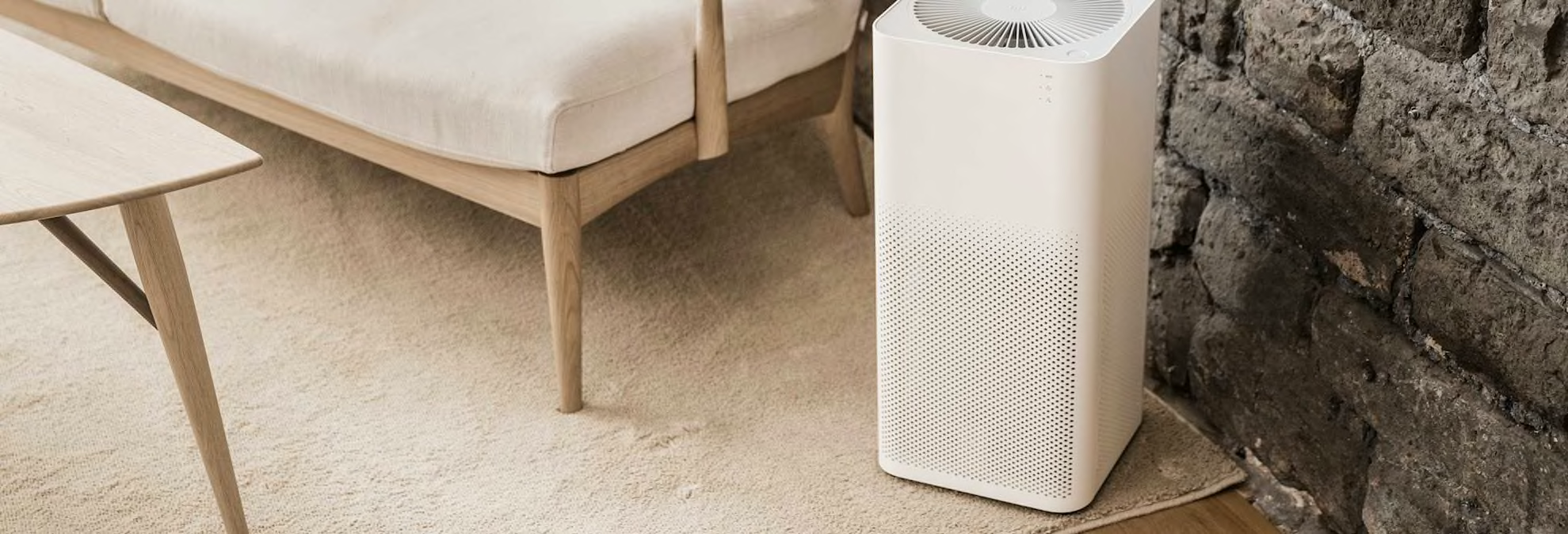
Air Purifier Buying Guide

Senior Home & Appliances Writer

Clean air is a vital part of everyday life. It affects our lungs, blood circulation, heart, and overall physical health. But it’s possible that the air inside your home is dirtier than you think. The concentration of certain pollutants is often two to five times higher indoors than outdoors, according to the Environmental Protection Agency.
The best way to improve indoor air quality is to remove the source of the problem—for instance, keeping pets and their dander away from your bedroom or not allowing smokers to light up indoors. In addition, ventilate your home with fresh, clean outdoor air by cracking open windows. If those steps aren’t possible (or if they’re not enough), consider room air purifiers.
Who Needs an Air Purifier?
Portable room air purifiers are designed to filter the air in a single room. They’re separate from whole-house air purifier systems and air filters, which are integrated into a home’s heating, ventilating, and air conditioning system and are designed to clean the air in the entire house.
Think of a room air purifier as a supplemental unit, like a space heater for a particularly drafty room in the context of a whole-house heating system, says Misha Kollontai, who oversees testing of air purifiers at Consumer Reports. “A whole-house system will work at filtering all the air that passes through it via the HVAC system,” he says. “But if you’re sitting next to a fireplace in the living room for extended periods of time, having a room air purifier there may not be a bad idea.” A room air purifier may be worth it too, say, in a bedroom, if you sleep with your pet.
If you’re affected by ongoing wildfires, choose an air purifier that’s effective against smoke. The best models can help clear harmful particulates.
What Does an Air Purifier Do?
An air purifier removes allergens only while they’re floating in the air.
Studies of room air purifiers show that using HEPA filters—filters with very fine mesh, certified to collect 99.97 percent of particles of a certain hard-to-capture size (0.3 micrometers in diameter)—can be quite effective at removing many of the most common household irritants. These include tiny viral droplets, particulate matter (such as from cigarette smoke and burning wood), pet dander, dust, and dust mites. For more details, see our article on what, exactly, an air purifier can catch.
Note: Once allergens have settled to the ground or onto surfaces (as is often the case with heavier particles, such as large pieces of dust and pollen), you’ll need a vacuum cleaner.
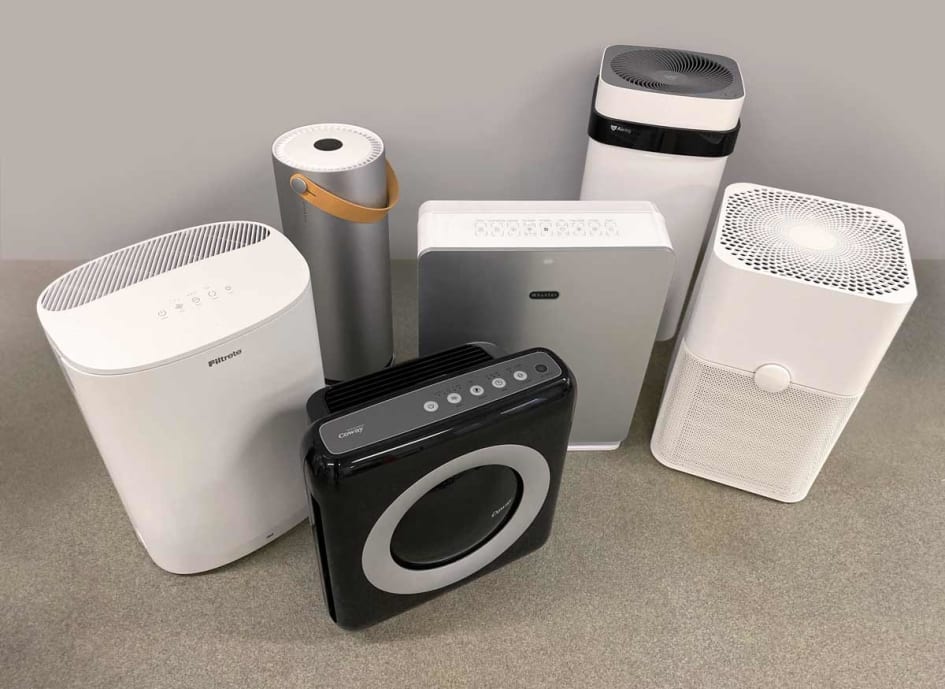
Consumer Reports Consumer Reports
Types of Air Purifiers
Different air purifiers work using a range of technologies. A few are helpful. Others are ineffective, or even potentially harmful to your health.
Mechanical filters: These purifiers use fans to force air through a dense web of fine fibers that trap particles. Filters with very fine mesh are called HEPA filters, as described above. While they work on microscopic particles, they can also remove larger particles (including dust, pollen, and some mold spores) when they’re suspended in the air. (Some filters are labeled “HEPA-type” or “HEPA-like.” They haven’t been certified to meet the requirements of a true HEPA filter but may still perform adequately in our tests.) Mechanical filters don’t help with gases or odors. And they can be expensive. Mechanical filters need to be replaced every six to 12 months. Replacement filters usually cost less than $80, but some can cost more than $200.
Activated carbon filters: Unlike mechanical filters, these filters use activated carbon to capture certain types of gases, including certain odor-causing molecules. But they’re not particularly effective against formaldehyde, ammonia, or nitrogen oxide. Because activated carbon filters don’t combat particles, many air purifiers will have both an activated carbon filter and a mechanical filter. Activated carbon filters get saturated faster than mechanical filters, though, and require replacement more frequently, every three months, as opposed to every six to 12 months for mechanical filters. Make sure to budget for replacements accordingly. Activated carbon filters usually cost up to $50 each.
Ozone generators: These appliances produce ozone, a molecule that can react with certain pollutants to alter their chemical composition. This can result in dangerous indoor air quality, and CR doesn’t recommend this type of air purifier. Makers of ozone generators often claim that the devices emit safe levels of ozone, but our tests have found that even at low settings, some ozone generators quickly exceeded the Food and Drug Administration’s limit of 0.05 parts per million for medical devices. Plus, studies reviewed by the Environmental Protection Agency have shown that low levels of ozone don’t effectively destroy indoor pollutants. Ozone has also been linked to decreased lung function and increased risks of throat irritation, coughing, chest pain, and lung tissue inflammation. Exposure might also worsen asthma, emphysema, and bronchitis.
Electrostatic precipitators and ionizers: With these electronic models, particles in the air become charged so that they stick—magnetlike—to plates on the machine or to nearby surfaces. CR doesn’t typically test electronic air purifiers, and we don’t recommend them because they can produce ozone.
Ultraviolet germicidal irradiation (UVGI): Some manufacturers claim that their air purifiers kill airborne viruses, bacteria, and fungal spores with UV lamps. But they might miss certain bacteria and mold spores that are resistant to UV radiation. And for this method to be effective, the UV light must be powerful enough and the exposure must last long enough—minutes to hours, rather than the few seconds typical of most UVGI air purifiers. CR doesn’t test UVGI technology, though some mechanical air purifiers we test may have the added function.
Photocatalytic oxidation (PCO): Some air purifiers use ultraviolet radiation and a photocatalyst, such as titanium dioxide, to produce hydroxyl radicals that oxidize gaseous pollutants. Depending on the pollutant, this reaction can generate harmful byproducts, such as ozone, formaldehyde, nitrogen dioxide, and carbon monoxide. CR doesn’t currently test air purifiers with PCO technology. There have been few field investigations exploring the effectiveness of PCO air purifiers, but one laboratory study, conducted by researchers at Syracuse University in New York, reported that the devices didn’t effectively remove any of the volatile organic compounds (VOCs) typically found in indoor air.
Photoelectrochemical oxidation (PECO): This variant of PCO emerged in 2017 from the manufacturer Molekule. The Molekule Air purifier didn’t score well in our tests for dust, smoke, and pollen removal. Since then, we’ve also tested the more expensive Molekule Air Pro, which performed better at removing contaminants on its highest setting but still didn’t impress in overall performance, nor did it rate well for reliability or owner satisfaction in our member survey.
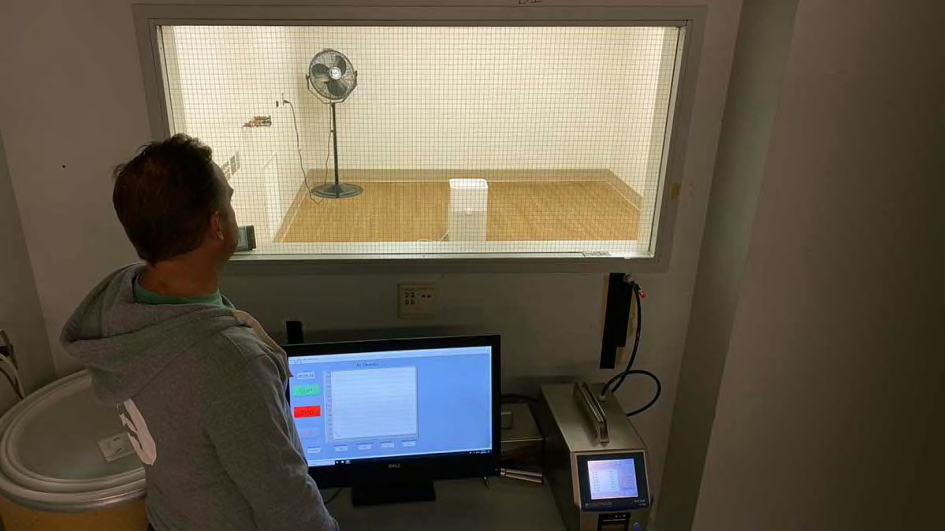
Consumer Reports Consumer Reports
How Consumer Reports Tests Air Purifiers
To see how well these machines clean the air, we inject smoke and dust into a sealed chamber and use a particle counter to measure the change in air particle concentration as the tested model runs for 15 minutes.
We test using particles as small as 0.1 micrometer and up to 1 micrometer, a range that includes dust mite allergens, cat allergens, smog, smoke, and atmospheric dust. We don’t measure for particles larger than 1 micrometer, such as pollen, because any air purifier that scores well in our tests should also be able to handle larger airborne particles.
Because most air purifiers have several speed settings, we test for dust and smoke removal both on the highest speed and at a lower speed that runs at a noise level no louder than 50 decibels. We also measure noise levels at every speed setting that a machine has. And because air purifiers should run at all hours to be effective, we calculate annual operating costs, which include filter replacements and energy use to run the machine 24 hours a day for an entire year.
Owner satisfaction and reliability ratings are also included in a model’s Overall Score. These ratings are based on our survey of members who reported on 22,076 air purifiers purchased between 2014 and 2024. The very best models in our tests effectively sanitize the air of dust, smoke, and pollen, and receive high marks for predicted reliability and owner satisfaction.
CR recommends more than three dozen models in our air purifier ratings. Most use a HEPA filter, and a vast majority also have carbon filters to assist in the removal of odors. These models meet Consumer Reports’ criteria for safety, performance, value, and reliability. For more information, read our article on the best air purifiers of the year.
What to Consider When Choosing an Air Purifier
Cost of replacement filters: As a general rule, you should replace mechanical filters (or clean those that can be vacuumed) every six to 12 months if they’re pleated and activated carbon filters every three months. Most of the units we test have an indicator light that lets you know when to change (or clean) the filter. Cost varies widely: In our tests of large air purifiers, they ranged from $20 to more than $200. Filters with odor-removing carbon can cost as much as $50.
Clear Air Delivery Rate (CADR): Many air purifiers have undergone the Association of Home Appliance Manufacturers’ voluntary certification program. It provides certified models with an AHAM Verifide seal, which specifies each model’s CADR value. The CADR reflects, in cubic feet per minute, the volume of clean air that an air purifier produces on its highest speed setting. For example, a purifier with a CADR of 250 for dust particles reduces them to the same concentration that would be achieved by adding 250 cubic feet of clean air each minute. The higher the CADR, the faster and more efficient the air purifier is. Room air purifiers with HEPA filters often achieve the highest CADR. There are different CADR ratings for removing tobacco smoke, dust, and pollen. Focus on the CADR for your main pollutant of concern. For instance, if you live with a smoker, choose an air purifier that has a high CADR for tobacco smoke.
Energy Star certification: Air purifiers must run around the clock to be effective, so you should factor in the energy cost when you shop. Energy Star certified purifiers are 40 percent more energy-efficient than standard models.
Room size: If an air purifier has an AHAM Verified seal, you can trust that the unit can handle the suggested room size listed. Be wary about manufacturers’ claims, though. We’ve tested many air purifiers that aren’t suitable for their claimed room sizes. You can check our ratings to see what room-size range we suggest for each model based on our test results. Also consider sizing up. Most models suitable for large rooms (350 square feet and larger) can also work well for smaller rooms at lower speeds. Lower speeds tend to be quieter, which is nice for when you’re watching TV or sleeping.
Noise: Judge an air purifier not just by how well it performs but also by how well you’ll be able to live with it. Because these appliances should always be running, they should also be quiet. (For reference, a noise rating around 50 decibels is roughly equal to the hum of a refrigerator.) You might be able to find a model’s decibel levels on its packaging or website listing before you buy it. Or check our air purifier ratings; we rate models on noise levels at both high- and low-speed settings.
How to Get the Most Out of Your Air Purifier
Clean or replace filters regularly. An air purifier can’t run efficiently if it has a dirty filter. Typically, you should replace pleated mechanical filters (or clean those that can be vacuumed) every six to 12 months and activated carbon filters every three months.
In this video, CR walks you through how to clean and replace filters.
Place it wisely. If you have just one unit, put it in the room where you spend the most time. For most people, that’s the bedroom. (Some units can be heavy and clunky to move around, so if you want an air purifier in multiple rooms, you may want to buy a unit for each one.) Make sure to place the air purifier in a spot where nothing can obstruct airflow—away from curtains, for instance.
Adjust the speed. To avoid noise disruptions, we suggest running the unit on its high-speed setting when you’re not in the room and turning it down to low when you’re nearby. Or buy an air purifier certified for a larger area so that you can run it on a low speed and still have it work effectively.
Air Purifier Features
These features are worth considering when you shop for an air purifier.
- 1
- / 6
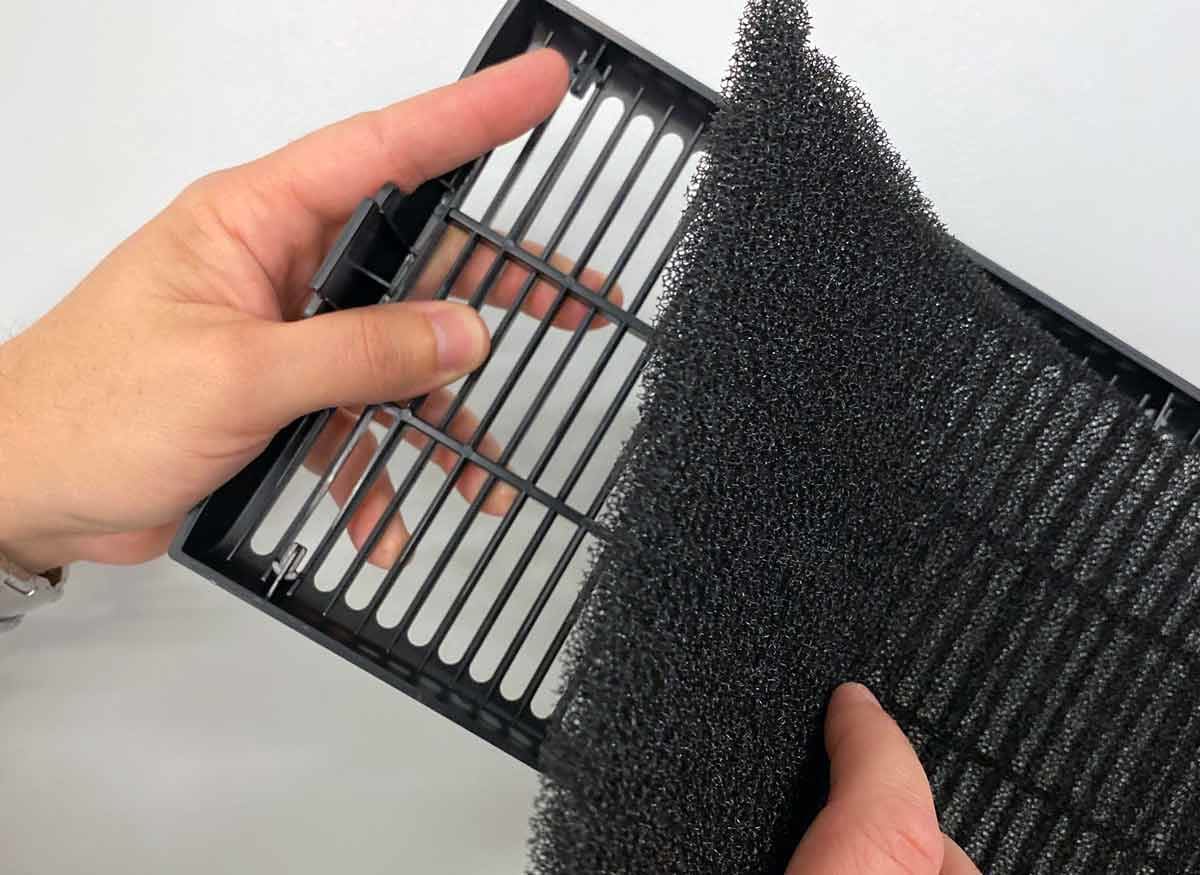
Washable Prefilters
These reusable filters collect large particles before they reach the primary filter, potentially extending the main filter’s life and saving you money on replacement filters.
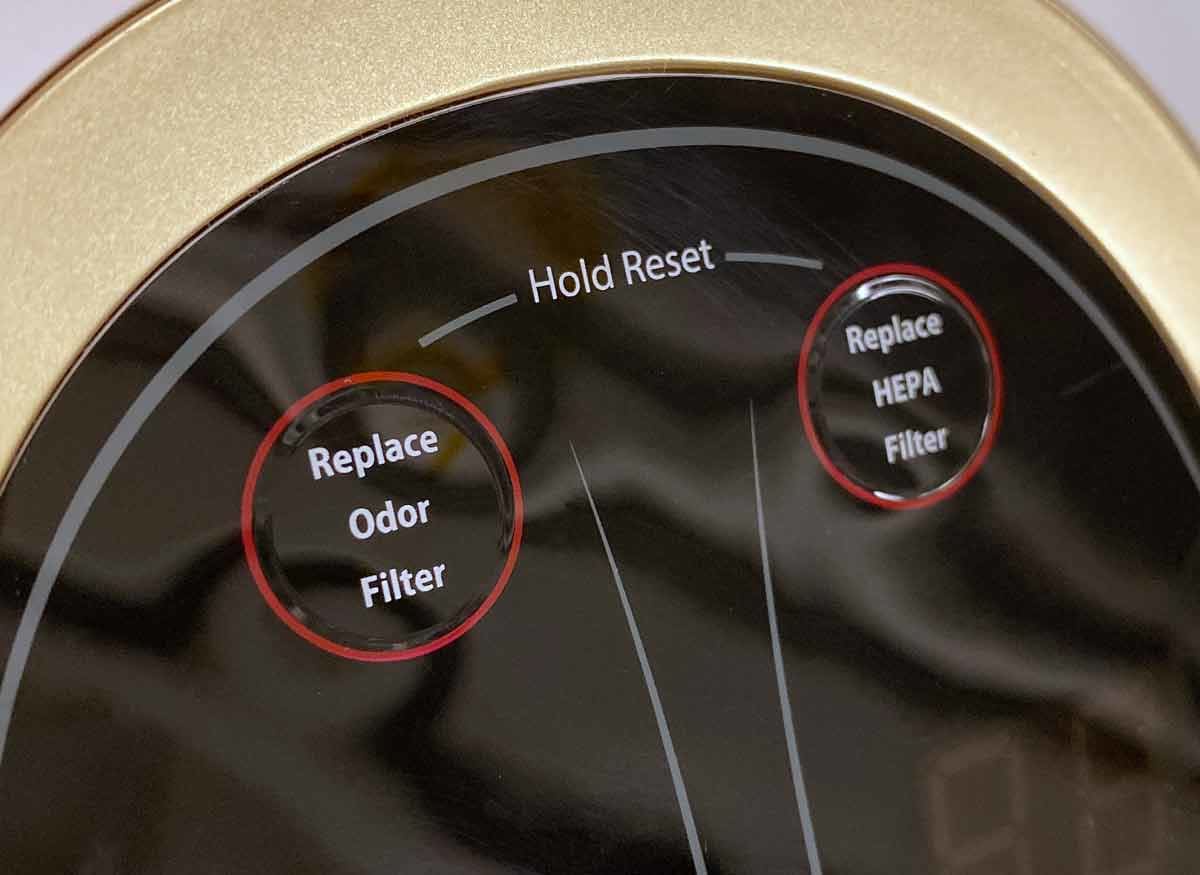
Filter Service Indicator Light
This light will flash when it’s time to replace or clean the filter.
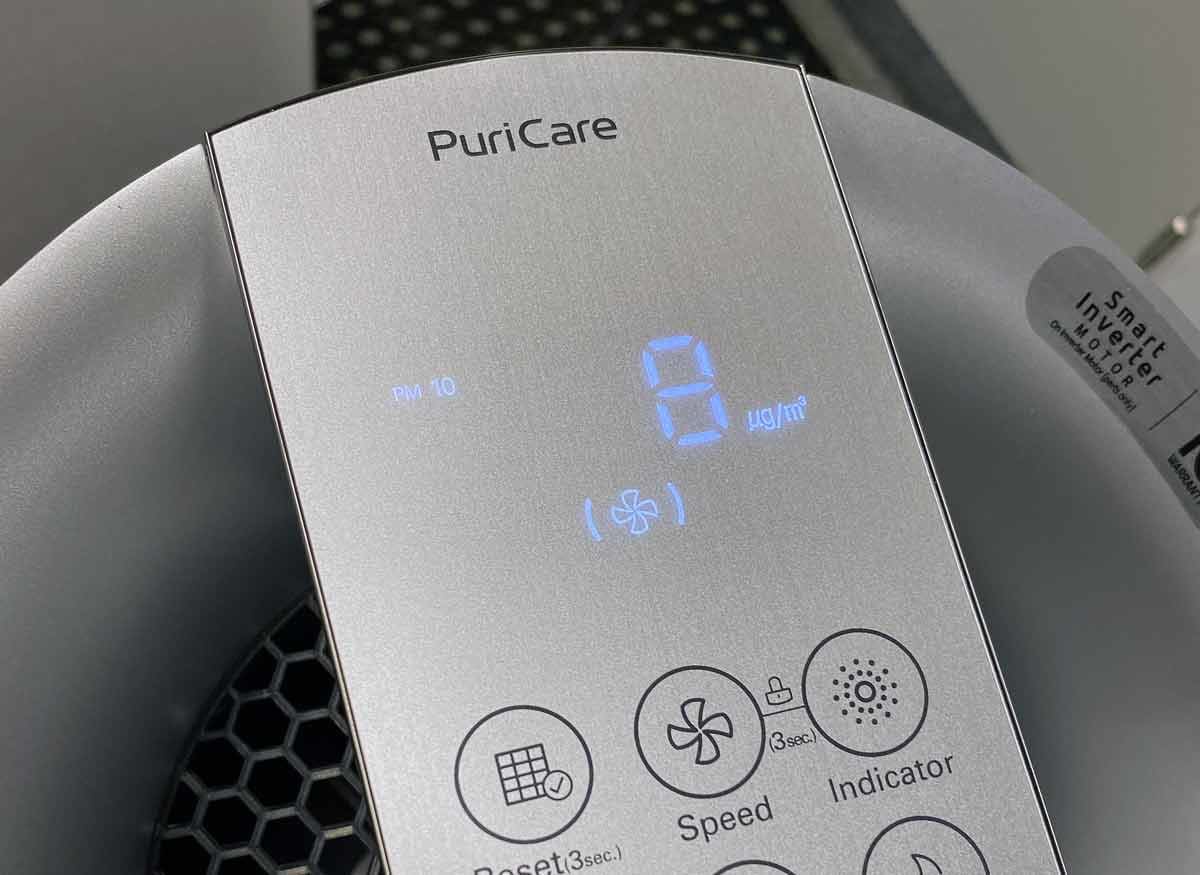
Air-Quality Sensors
These particle counters can detect how polluted the air is and automatically adjust the air purifier’s cleaning speed accordingly.
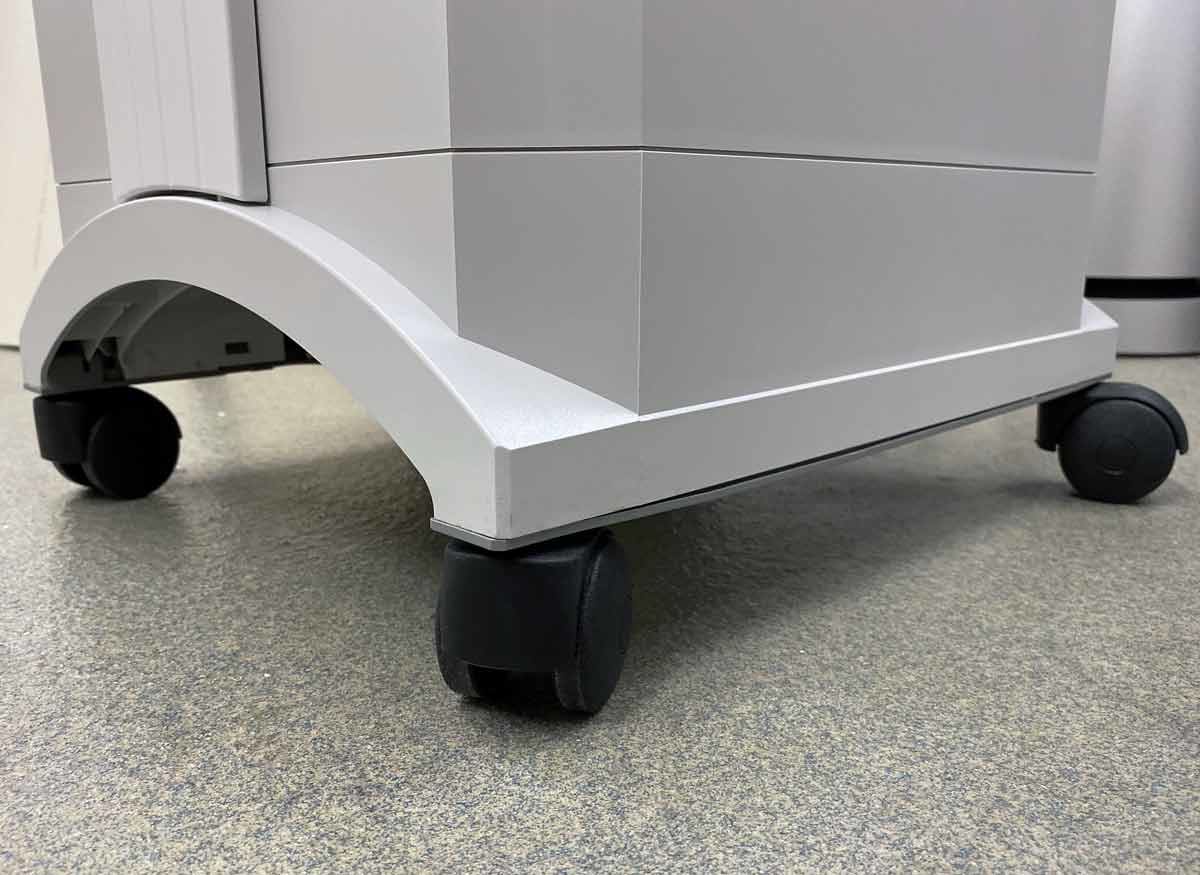
Carrying Handles and Wheels
Most portable air purifiers weigh between 10 and 20 pounds. If you plan to move yours from room to room, get a model with casters to make it easy to roll.
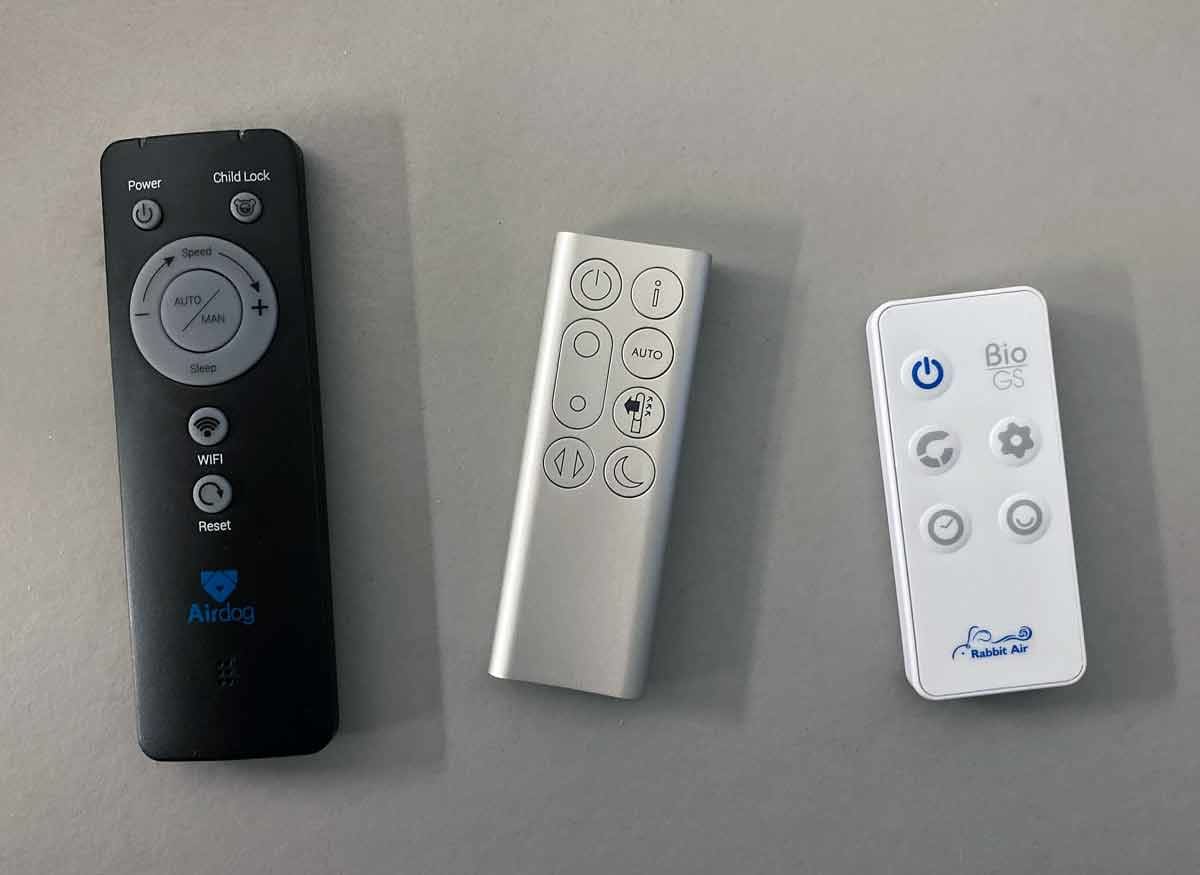
Remote Control
This lets you easily adjust settings from across a room. Some models use a phone app that serves the same purpose.
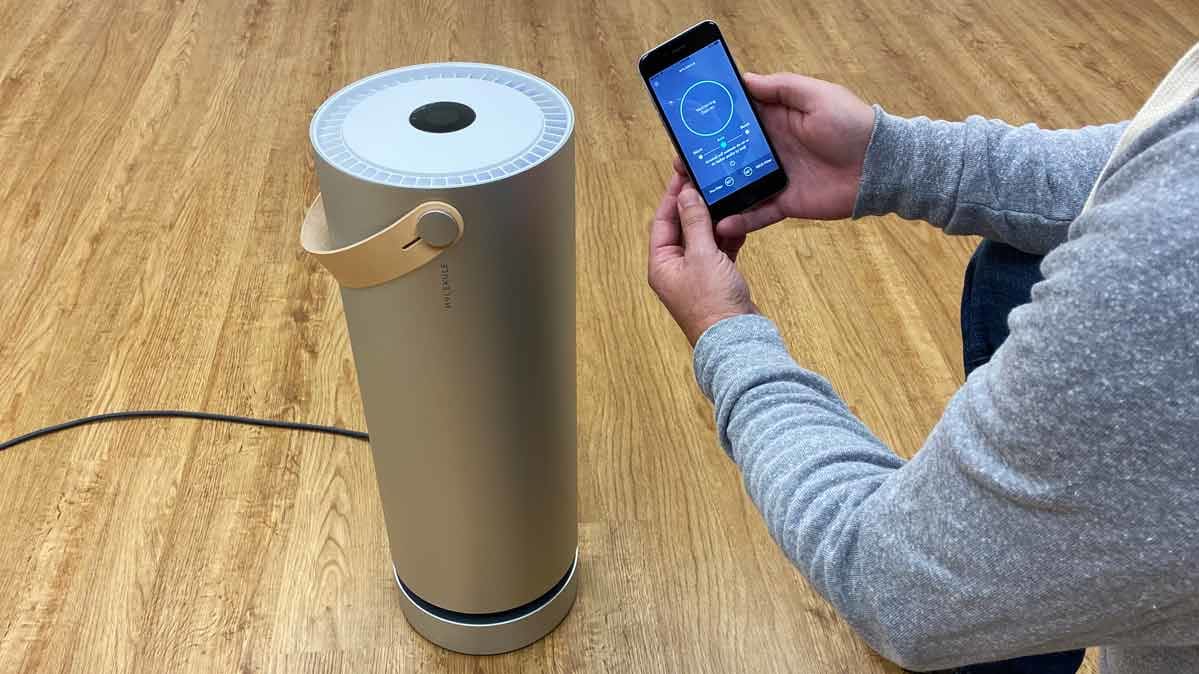
WiFi Capability
WiFi-connected models that you can monitor via a smartphone app provide users with particulate matter readings and the levels of pollutants being filtered out. The app, which doubles as a remote control, enables you to set schedules for the device and receive alerts when your filter needs replacing.
Washable Prefilters
These reusable filters collect large particles before they reach the primary filter, potentially extending the main filter’s life and saving you money on replacement filters.
Filter Service Indicator Light
This light will flash when it’s time to replace or clean the filter.
Air-Quality Sensors
These particle counters can detect how polluted the air is and automatically adjust the air purifier’s cleaning speed accordingly.
Carrying Handles and Wheels
Most portable air purifiers weigh between 10 and 20 pounds. If you plan to move yours from room to room, get a model with casters to make it easy to roll.
Remote Control
This lets you easily adjust settings from across a room. Some models use a phone app that serves the same purpose.
WiFi Capability
WiFi-connected models that you can monitor via a smartphone app provide users with particulate matter readings and the levels of pollutants being filtered out. The app, which doubles as a remote control, enables you to set schedules for the device and receive alerts when your filter needs replacing.
Air Purifier Brands
Alen Corporation, based in Austin, Texas, was founded in 2005 with a focus on creating True HEPA air purification products for homes and businesses. Its air purifiers and filters are sold direct-to-consumer on alen.com and are also available nationally at Amazon, Best Buy, Home Depot, Lowe’s, and Wayfair. Prices for Alen air purifiers range from $200 to $800.
Blueair is an international company based in Sweden and founded in 1996. Its products are available nationally from Amazon, Best Buy, Costco, Home Depot, Lowe’s, and Sears. Prices for air purifiers range from around $100 to around $500.
Dyson, founded in 1993, is a British company that designs and manufactures vacuum cleaners, hand dryers, bladeless fans, heaters, humidifiers, air purifiers, lights, and hair dryers and styling tools. Products are sold directly through Dyson, as well as at many major retailers, including Amazon, Best Buy, and Target. Dyson’s air purifiers cost about $500 to $1,100.
GermGuardian develops and sells products for mass retailers. Its air purifiers are available online at Amazon, Best Buy, Costco, Lowe’s, Target, and Walmart. Prices range from about $60 to about $400.
Holmes models are sold at mass merchants, including Amazon, Sears, Target, and Walmart. Prices range from about $60 to about $180.
Honeywell is a mass-market brand available at large merchants, including Target and Walmart, and widely online. Prices range from around $90 to around $500.
Hunter is a widely sold brand on home-shopping channels. Its air purifiers are also sold at Walmart. Prices range from $80 to $300.
Levoit is a California-based producer of air purifiers, humidifiers, vacuums, filters, and thermostats, and is part of the VeSync Co. family of products. Levoit air purifiers are sold widely online and at mass retailers like Best Buy, Home Depot, Target, and Walmart. Prices range from $50 to $500.
Other Ways to Improve Indoor Air Quality
Vacuum regularly. Air purifiers can’t remove larger allergens that settle on furniture and carpets—like dust mites and pet hair—unless they get disturbed and redistributed into the air. Use a vacuum cleaner with HEPA-certified filtration once or twice a week to clean floors and furniture.
Use an exhaust fan in the kitchen. Do the same in bathrooms and laundry rooms.
Stop smoking indoors. That also goes for burning candles and wood fires.
Ventilate. Open your windows on nice days to let in clean, dry outdoor air. If pollen or related allergies keep you from opening windows, run your air conditioner or forced-air cooling system with a clean air filter.
Reduce the use of chemicals. Limit the use of chemical-heavy cleaning products, and store house paint, glues, and insecticides in a safe place away from high-traffic areas in your home.



























